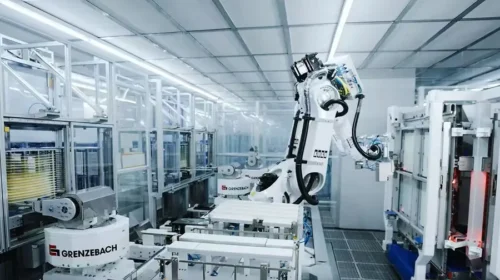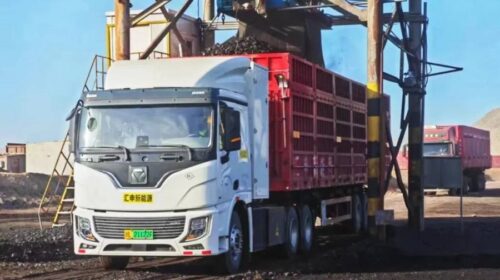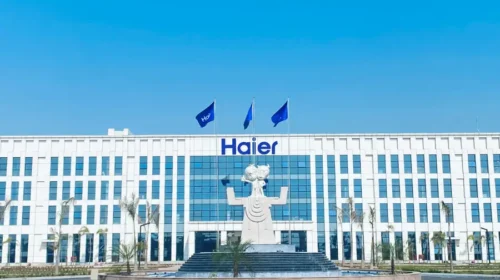IPO-bound Guofu stuck at low end of hydrogen-power food chain

The new energy company has filed to list in Hong Kong, earning most of its money from hydrogen transport and refueling equipment
Key Takeaways:
- Guofu Hydrogen has posted steady revenue growth from 2021 to 2023, with a combined 238 million yuan in losses over the three-year period
- The company will need to make technological breakthroughs in hydrogen production and storage to succeed over the longer term
By Hugh Chen
China has made the advancement of hydrogen power a national priority. And when the government makes up its mind that way, it means there’s plenty of money to be made for any company that wants to play ball. That reality has accelerated in the last few years as Beijing races to develop clean energy to achieve its goal of reaching zero net carbon emissions by the middle of this century.
The government policy has spawned a growing cache of hydrogen startups, some of which are now turning to public markets for fresh funds from investors enthusiastic about the industry’s potential. Jiangsu Guofu Hydrogen Energy Equipment is the latest of those, filing last week to list in Hong Kong. Its plan to tap public markets comes a week after Shanghai Refire Group Ltd. submittedits own application, also to list in Hong Kong.
Founded in 2016, Guofu Hydrogen makes specialized equipment used to produce, store, and transport hydrogen. Its primary customers are many of the companies throughout the clean energy source’s ecosystem, including fuel cell system integrators, vehicle manufacturers, energy companies, and city bus operators.
But adoption of hydrogen fuel has been relatively slow, despite years of government support, resulting in modest sales for Guofu and its peers. The company recorded sales of just 522 million yuan ($98.6 million) last year, up 45% from 359 million yuan in 2022, and 329 million yuan the year before that, according to its listing document.
Like many startups in emerging fields, Guofu has yet to achieve any profits, though its losses for the last three years are relatively modest. The company’s net loss grew from 71 million yuan in 2021 to 94 million yuan in 2022, before falling back to 73 million yuan last year.
The company has secured multiple funding rounds from mostly second-tier investors such as Oriental Jiang Xia, Jinpu Investment, Aowen Venture Capital, Jintai Jinhong, and Yonghua Investment. In February, Jiyang Hydrogen acquired 0.52% of the company for 20 million yuan, implying a valuation of about 3.8 billion yuan at the time.
That means Guofu is still far from “unicorn” status that refers to companies worth $1 billion or more. But its price-to-sales (P/S) ratio of 7.3 based on that valuation also looks quite respectable for this kind of growth company.
While Guofu Hydrogen promotes itself as a leader across the hydrogen value chain, a closer look at its product catalog paints a less impressive picture of a company lacking many core technologies for hydrogen production and storage. Its four main product categories primarily focus on equipment for hydrogen transportation and refueling, rather than for more crucial and tech-intensive hydrogen generation and liquefaction.
Truth be told, making equipment for hydrogen transport and refueling is not all that complicated. Instead, the big challenges lie in the actual production and storage of the fuel. Production involves splitting water or extracting hydrogen from natural gas, while storage requires costly liquefaction by cooling hydrogen to extremely low temperatures.
Low-tech focus
Guofu is clearly focused on the two types of lower-tech equipment for transport and refueling, which contributed 81.2% of its revenue in 2023. The remainder came from selling hydrogen generation and liquefaction equipment for storage, which largely remains in the experimental stage.
Despite years of investment, the company has not made significant progress in developing hydrogen production and storage technologies. According to its listing document, the company’s R&D expenses remained relatively constant over the last three years, falling slightly from 42 million yuan in 2021 to 39 million yuan in 2023.
Guofu’s challenges reflect the broader struggles confronting China’s hydrogen power industry, which has yet to take off despite relatively long-running government promotion.
Current subsidies focus mostly on financial support for end users, with both the central and local governments providing such incentives. The pace of support has picked up since last year, with various regions introducing specific steps to promote the power source. For example, a district in Shenyang, capital of Northeast China’s Liaoning province, has begun providing financial rewards ranging from 500,000 yuan to as much as 1.05 million yuan per vehicle for anyone bold enough to buy a hydrogen-powered car.
Despite those subsidies, hydrogen-powered cars – currently the most significant application for hydrogen power – have been slow to catch on, in stark contrast with the recent rapid uptake of lithium battery-powered electric vehicles. Sales of hydrogen-powered cars in China totaled just 5,800 units in 2023, a negligible figure compared with the more than 30 million vehicles sold in the market that year, according to data from China Association of Automobile Manufacturers.
While its tech may not be leading-edge in the broader hydrogen power space, Guofu Hydrogen is a leader in terms of market share for its products. It holds about 30% of two sub-markets for the main types of hydrogen transportation equipment it makes, according to third-party research cited in its listing document.
However, these areas have relatively low barriers to entry, meaning its position could quickly change. And Guofu’s current leading position is hardly substantial. For instance, its 30.4% market share in vehicle-mounted high-pressure hydrogen supply systems last year wasn’t that far ahead of its second- and third-place rivals, which held 24.6% and 22.9% market share.
In addition to its persistent losses, investors may need to consider another major risk factor for the company: the high concentration of its revenue among a limited number of customers. The proportion of revenue contributed by Guofu Hydrogen’s top five customers increased to 56.7% in 2023, up from 53.5% in 2022 and 44.8% in 2021, indicating a growing dependence on a relatively small group of clients.
At the end of the day, Guofu’s success will depend on its ability to make technological breakthroughs in the more sophisticated links of the hydrogen energy food chain. The company said in its prospectus it would use a portion of its IPO funds to improve its hydrogen production equipment technology, although it did not specify an amount.
After all, hydrogen production is one of the most promising areas with significant growth potential and higher barriers to entry. The market for such equipment is expected to grow about 80% annually in China from 2023 to 2028, increasing from 1.9 billion yuan to 64.2 billion yuan over that period. Winning a sizable share of that market would provide a huge growth engine for Guofu or any company that can find ways to produce hydrogen energy both safely and affordably.
To subscribe to Bamboo Works free weekly newsletter, click here






